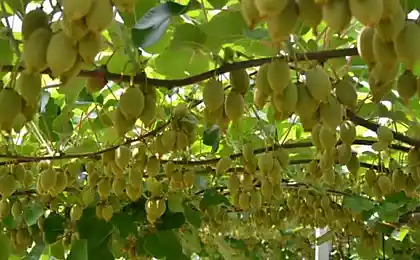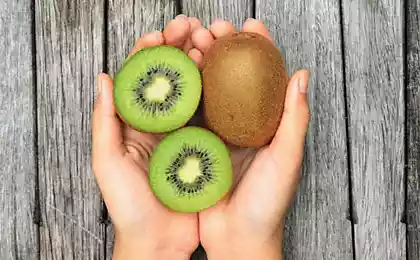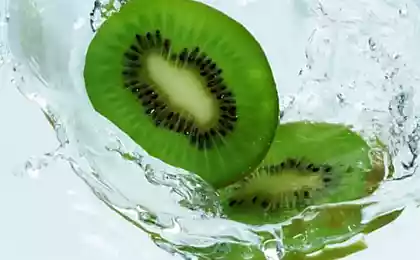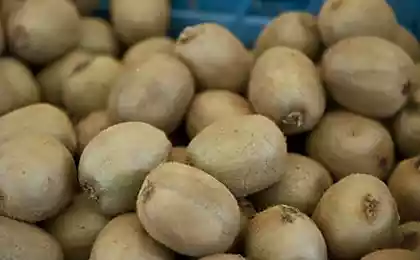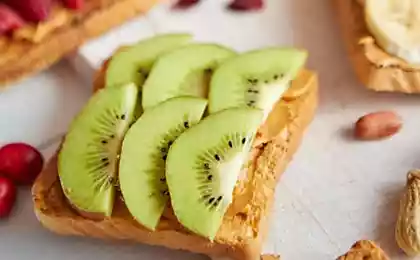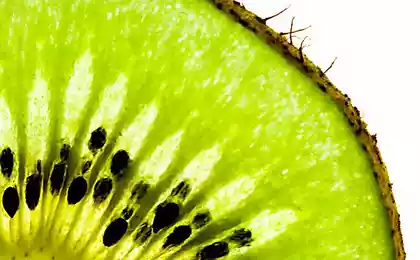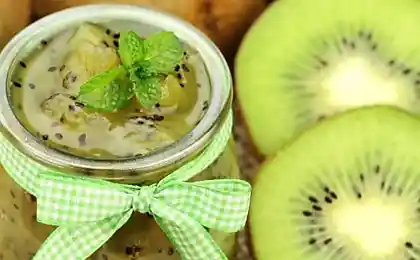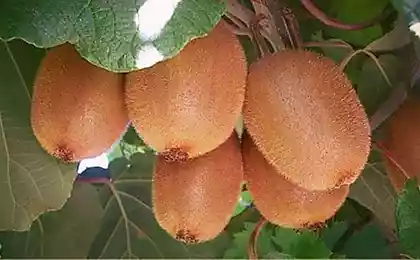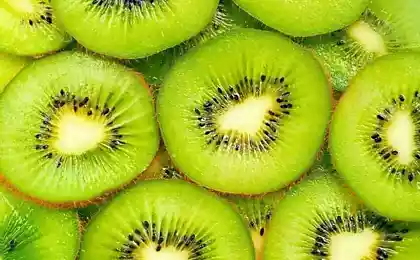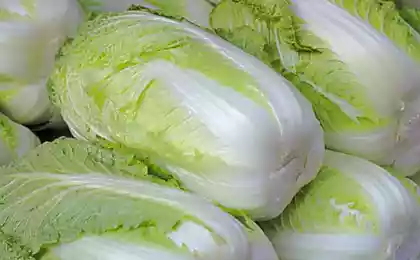782
The history of the kiwi (8 pics + letter)
All tend to think that kiwis come from New Zealand.
In fact kiwi grown in ancient China, and it was imported to New Zealand in 1906. However, the modern kiwi was the result of much experimentation man over his ancestor malosedobnym just any '73 ago. Perhaps this is the most famous invention of the New Zealanders. Initially, it was called "Chinese gooseberries", then it was decided to name it in honor of the national symbol of the country - a small bird kiwi.
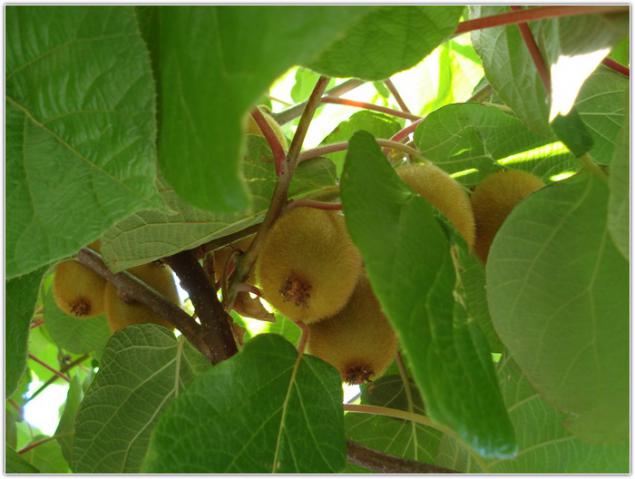
So, the story began with a kiwi that New Zealand medic and part-time amateur horticulturist Alexander Allison at the dawn of the XX century became interested in decorative vine mihutao growing in China and blooming spring stunning white flowers. In fact, his interest in this vine just flowers, and not the berries, which were small, hard and almost tasteless.
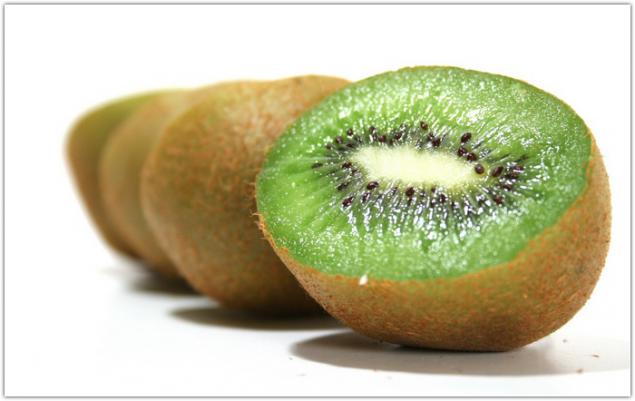
And then one day his Chinese friend sent him a long-awaited mihutao seeds from which very quickly grew quite impressive plant. It is difficult to say what prompted Alexander and his fellow gardeners do cultivation of Chinese savage, but just after some 30 years, they got an absolutely stunning result of a huge bush-vines strewn with giant fluffy and delicious berries. However, this would require multiple pruning, grafting, fertilizer, etc. But the result was worth it: liana grew at a rate of 15-20 cm per day, and the harvest could be removed every 2 days.
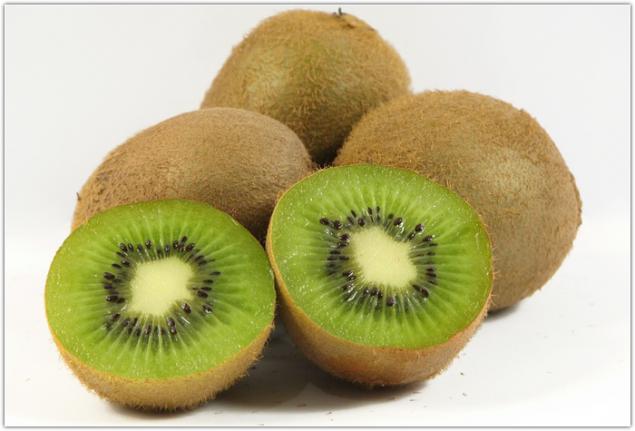
But for many years to feast on unusual fruit, which resembles the taste of strawberry, banana, melon, watermelon and pineapple at the same time could only family of Alexander Ellison and his friends. Perhaps the rest of the population of the globe so would never have learned about this unusual fruit, if ... If a few years later, in the late 30s, when the world and New Zealand, including strike the world industrial crisis. It was then that one lost job port clerk named James McLoklin decided to go with grief growing lemons on the farm of his relatives. But as lemons demand almost never used, he recalled that one of the neighbors of his parents, farmers grow the same Chinese gooseberry, which is growing much faster than lemons, gives a gigantic crop, and, most importantly, unlike lemons, its no one for sale does not grow. As time has shown, this idea turned out to be a truly "golden" and soon overgrown 30-acre plantation began to bring James McLoklin many thousands profits. Soon he was interested in the experience and neighbors, in the end of the kiwi quickly learned all the people of New Zealand.
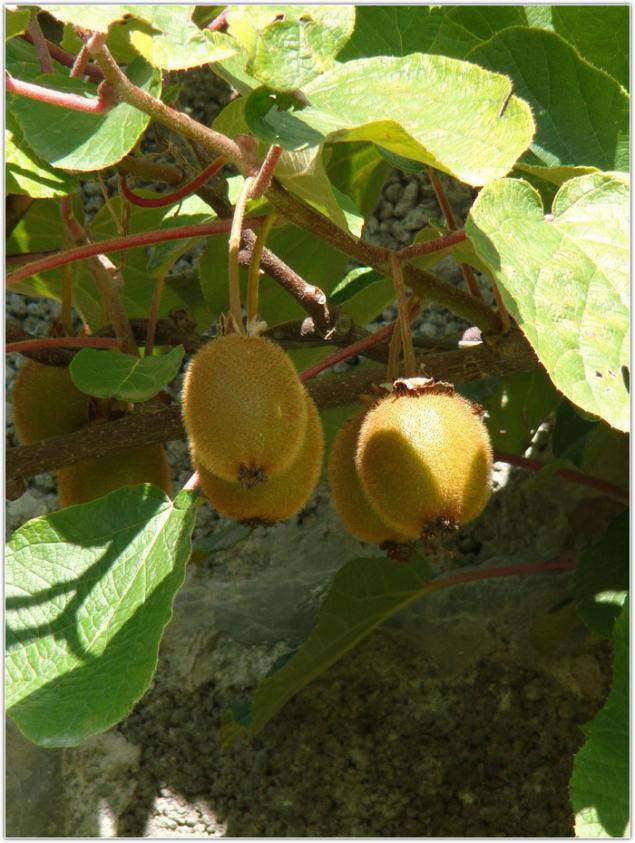
At home progenitor kiwi - China is actively involved in his selection, trying to grow fruit with ruby flesh. All the world is now sold every year about two billion kiwifruit.
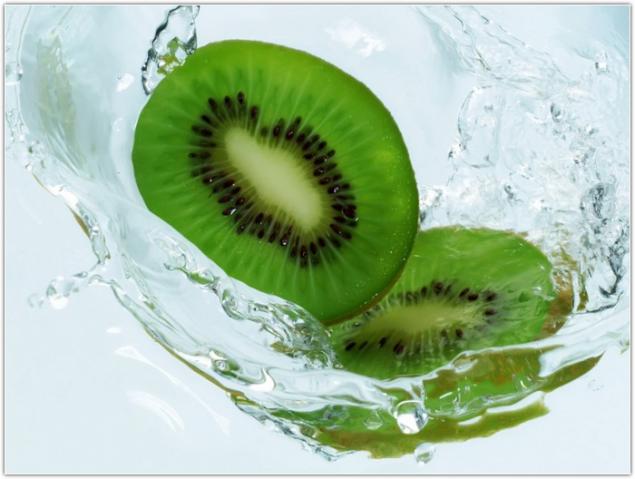
And what's inside?
Most of us know that kiwi many vitamins. To be more specific, only one fruit contains 1, 5 times the minimum daily requirement of vitamin C. In addition, and carotene content in kiwi higher than most fruits. Besides those already mentioned in the plush berries contain vitamins PP, E, B1 and B2, and also a lot of potassium (about 120 mg in the fruit average size), magnesium, iron, calcium and phosphorus.

Kiwi instead of drugs
The high potassium content makes the kiwi indispensable for high blood pressure. A few fruits, eaten after a hearty lunch, help get rid of the feeling of heaviness in the stomach, heartburn and otryzhki.A not so long ago, Norwegian researchers found that kiwifruit can help in the fight against heart disease because it has the ability to burn fat blocking the artery, which reduces the risk of blood clots. Based on their findings, the researchers recommend a daily basis to eat two or three kiwi fruit. The effect of such a diet, according to Norwegian researchers, manifests itself within 28 days. Over this period, 18% reduced risk of blood clots by 15% and reduced blood levels of harmful fatty acids. So the kiwi can be a useful alternative to aspirin, which is often used for the same purposes.
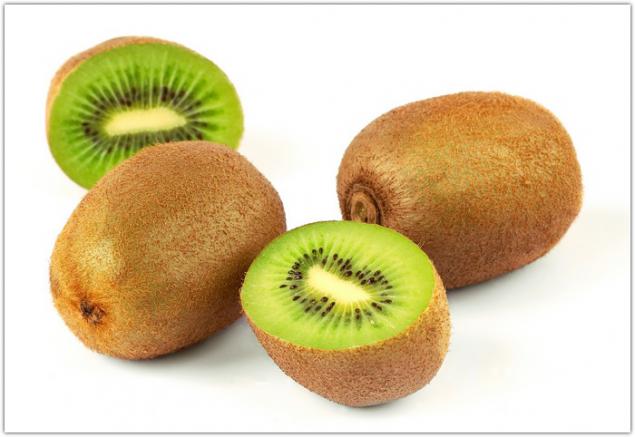
Dieters
The kiwi contains many enzymes that accelerate the burning of fat and promotes the formation of strengthening collagen fibers (as in papaya, pineapple and fennel). The direct connection between this fact and weight loss, but if you dream of a slim figure, you should definitely pay attention to the kiwi. Firstly, a kiwi contains a lot of rough fiber, and, secondly, sugars therein is much less than in most fruits. One medium fruit (60 g) - is only about 30 kcal.
Photo: www.flickr.com
Text: www.moikompas.ru
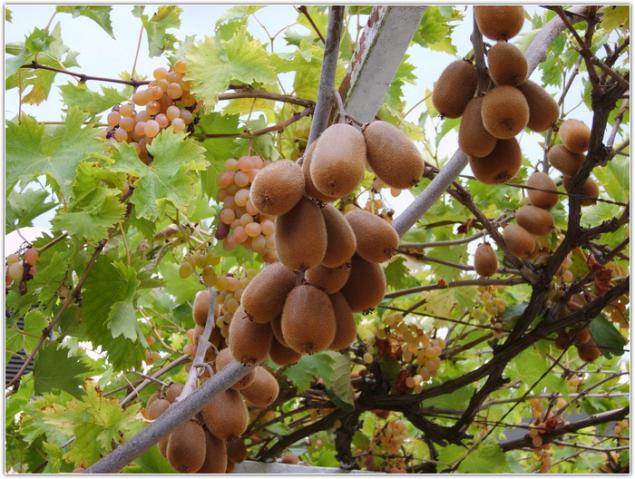
Source:
In fact kiwi grown in ancient China, and it was imported to New Zealand in 1906. However, the modern kiwi was the result of much experimentation man over his ancestor malosedobnym just any '73 ago. Perhaps this is the most famous invention of the New Zealanders. Initially, it was called "Chinese gooseberries", then it was decided to name it in honor of the national symbol of the country - a small bird kiwi.

So, the story began with a kiwi that New Zealand medic and part-time amateur horticulturist Alexander Allison at the dawn of the XX century became interested in decorative vine mihutao growing in China and blooming spring stunning white flowers. In fact, his interest in this vine just flowers, and not the berries, which were small, hard and almost tasteless.

And then one day his Chinese friend sent him a long-awaited mihutao seeds from which very quickly grew quite impressive plant. It is difficult to say what prompted Alexander and his fellow gardeners do cultivation of Chinese savage, but just after some 30 years, they got an absolutely stunning result of a huge bush-vines strewn with giant fluffy and delicious berries. However, this would require multiple pruning, grafting, fertilizer, etc. But the result was worth it: liana grew at a rate of 15-20 cm per day, and the harvest could be removed every 2 days.

But for many years to feast on unusual fruit, which resembles the taste of strawberry, banana, melon, watermelon and pineapple at the same time could only family of Alexander Ellison and his friends. Perhaps the rest of the population of the globe so would never have learned about this unusual fruit, if ... If a few years later, in the late 30s, when the world and New Zealand, including strike the world industrial crisis. It was then that one lost job port clerk named James McLoklin decided to go with grief growing lemons on the farm of his relatives. But as lemons demand almost never used, he recalled that one of the neighbors of his parents, farmers grow the same Chinese gooseberry, which is growing much faster than lemons, gives a gigantic crop, and, most importantly, unlike lemons, its no one for sale does not grow. As time has shown, this idea turned out to be a truly "golden" and soon overgrown 30-acre plantation began to bring James McLoklin many thousands profits. Soon he was interested in the experience and neighbors, in the end of the kiwi quickly learned all the people of New Zealand.

At home progenitor kiwi - China is actively involved in his selection, trying to grow fruit with ruby flesh. All the world is now sold every year about two billion kiwifruit.

And what's inside?
Most of us know that kiwi many vitamins. To be more specific, only one fruit contains 1, 5 times the minimum daily requirement of vitamin C. In addition, and carotene content in kiwi higher than most fruits. Besides those already mentioned in the plush berries contain vitamins PP, E, B1 and B2, and also a lot of potassium (about 120 mg in the fruit average size), magnesium, iron, calcium and phosphorus.

Kiwi instead of drugs
The high potassium content makes the kiwi indispensable for high blood pressure. A few fruits, eaten after a hearty lunch, help get rid of the feeling of heaviness in the stomach, heartburn and otryzhki.A not so long ago, Norwegian researchers found that kiwifruit can help in the fight against heart disease because it has the ability to burn fat blocking the artery, which reduces the risk of blood clots. Based on their findings, the researchers recommend a daily basis to eat two or three kiwi fruit. The effect of such a diet, according to Norwegian researchers, manifests itself within 28 days. Over this period, 18% reduced risk of blood clots by 15% and reduced blood levels of harmful fatty acids. So the kiwi can be a useful alternative to aspirin, which is often used for the same purposes.

Dieters
The kiwi contains many enzymes that accelerate the burning of fat and promotes the formation of strengthening collagen fibers (as in papaya, pineapple and fennel). The direct connection between this fact and weight loss, but if you dream of a slim figure, you should definitely pay attention to the kiwi. Firstly, a kiwi contains a lot of rough fiber, and, secondly, sugars therein is much less than in most fruits. One medium fruit (60 g) - is only about 30 kcal.
Photo: www.flickr.com
Text: www.moikompas.ru

Source:
